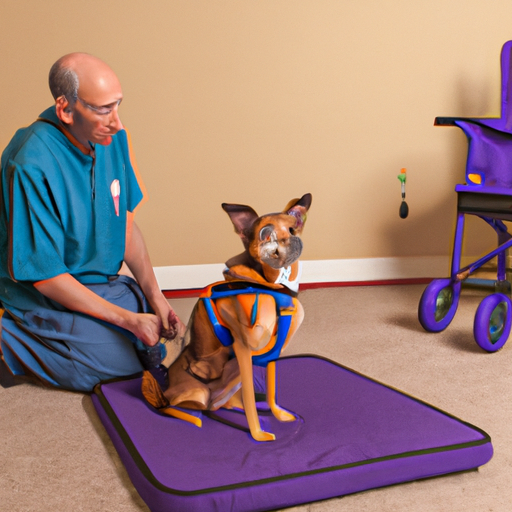Understanding Hip Dysplasia
Hip dysplasia, a condition that affects many dogs, especially larger breeds, can be a daunting diagnosis for any caregiver. It’s characterized by a deformity of the hip joint, resulting in pain, inflammation, and decreased mobility.
In this condition, the ball and socket joint of the hip doesn’t fit together properly, causing the bones to grind against each other. This grinding can cause severe discomfort, leading to decreased activity and quality of life for your furry friend.
There’s no need to panic though. As a caregiver, there are several steps you can take to manage this condition and ensure your dog lives a comfortable, happy life.
Treatment Options for Hip Dysplasia
There are several treatment options available for dogs diagnosed with hip dysplasia. These range from non-invasive therapies to surgical interventions. The choice of treatment will depend on factors like your dog’s age, size, overall health, and severity of the dysplasia.
-
Non-surgical treatments: These are typically the first line of treatment and include:
-
Pain management using Non-Steroidal Anti-Inflammatory Drugs (NSAIDs)
- Weight management to reduce stress on the hips
-
Physical therapy and controlled exercise
-
Surgical treatments: If non-surgical treatments don’t provide sufficient relief, surgery may be recommended. Surgical options include:
-
Total hip replacement
- Femoral head ostectomy
- Double or triple pelvic osteotomy
Managing Your Dog’s Diet and Weight
One of the most effective ways to manage hip dysplasia is through weight management. Excess weight puts additional stress on your dog’s hips, exacerbating the condition.
Here are some tips for managing your dog’s weight:
- Feed your dog a balanced diet
- Monitor portion sizes
- Regular, controlled exercise
- Regular weigh-ins to monitor progress
| Ideal Weight | Overweight | Obese |
|---|---|---|
| Ribs easily felt | Ribs hard to feel | Ribs cannot be felt |
Providing a Comfortable Environment
A comfortable environment can significantly improve the quality of life for a dog with hip dysplasia. Here are some ways you can make your home more accommodating:
- Provide orthopedic beds or mats
- Limit stairs and slick floors
- Use ramps to help your dog get into cars or onto furniture
Physical Therapy and Exercise
Regular, low-impact exercise can help strengthen your dog’s muscles, improve flexibility, and reduce pain. It’s essential, however, to consult with your vet before starting any exercise regimen.
Here are some exercises that can be beneficial:
- Walking
- Swimming
- Range-of-motion exercises
FAQs
Q: Can hip dysplasia be prevented?
A: While there’s no surefire way to prevent hip dysplasia as it’s often genetic, maintaining a healthy weight and balanced diet can reduce the risk.
Q: Is hip dysplasia a death sentence for my dog?
A: Absolutely not. While hip dysplasia can affect your dog’s quality of life, with proper management and care, your dog can lead a happy and comfortable life.
Q: Should I restrict my dog’s activity if they have hip dysplasia?
A: Not necessarily. While it’s essential to avoid high-impact activities, regular low-impact exercises like walking and swimming can be beneficial. Always consult your vet before starting any exercise regimen.



